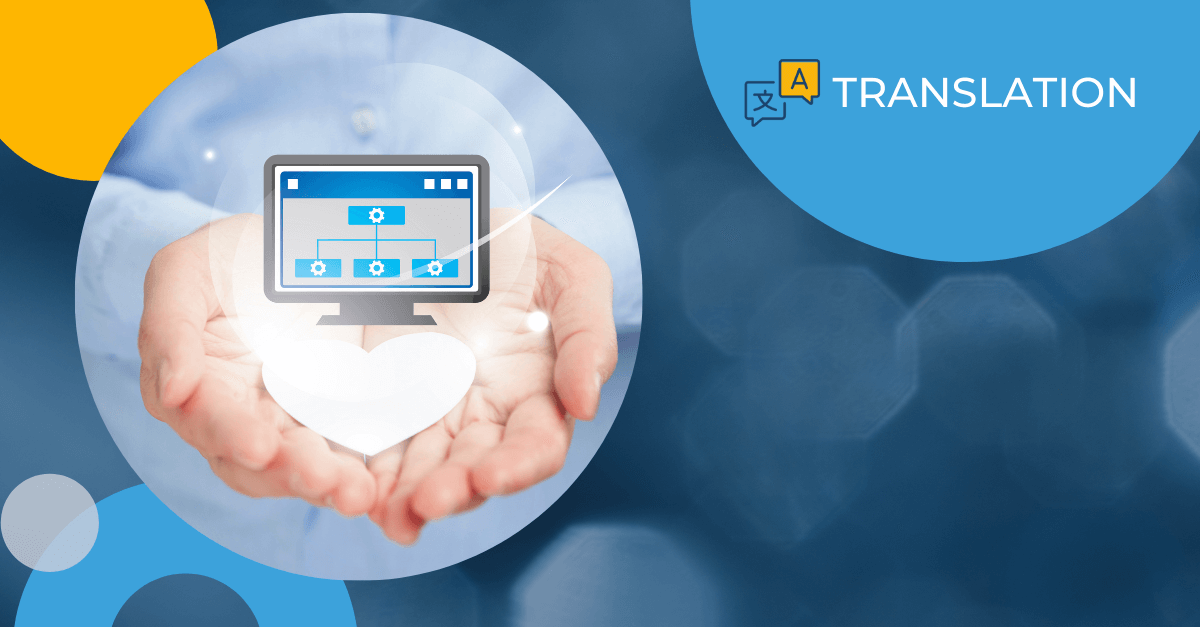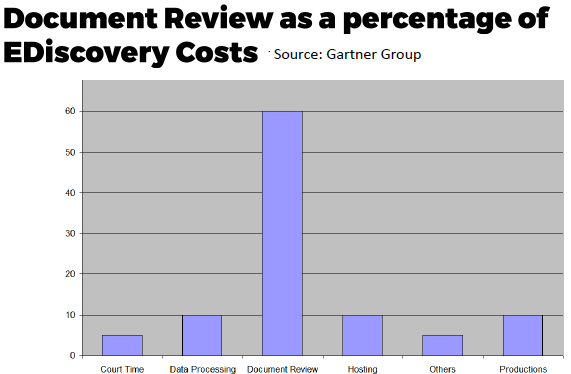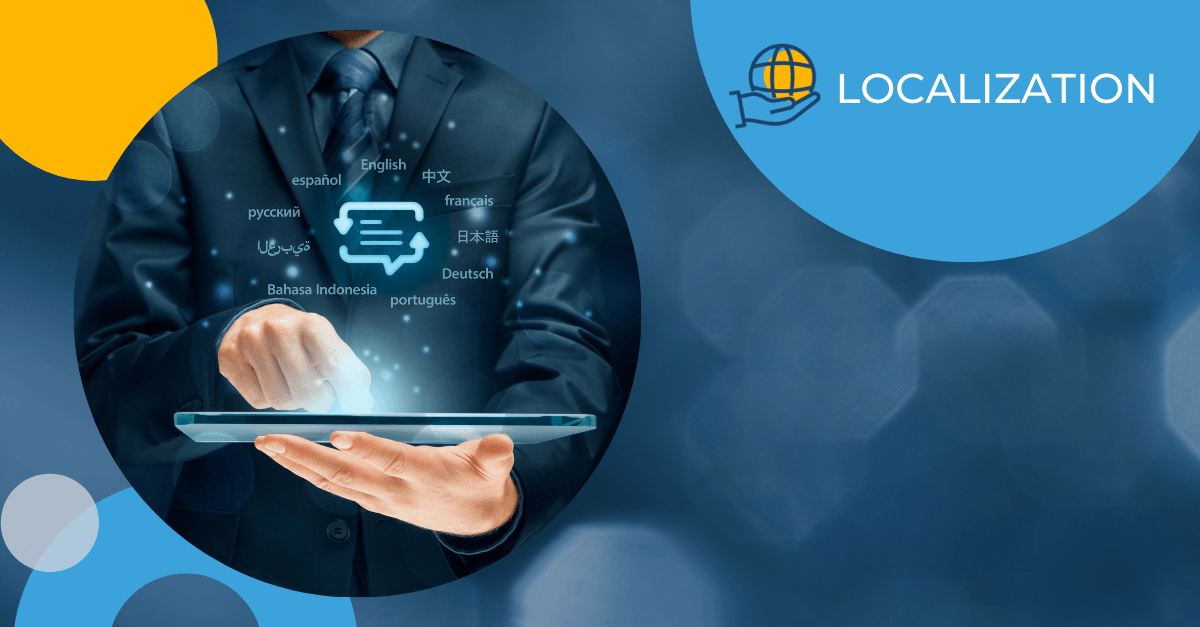Month: August 2017
Think Globally, Act Locally: Expanding Online Reach

In order to compete in today’s international, multicultural business landscape, companies need a strategy to constantly expand their geographical online reach and customer engagement. That process begins with a localization strategy – a plan for how to communicate effectively across multiple cultures and languages.
The importance of localization
A target audience that feels a company is speaking directly to them will respond in kind. Too often, however, marketing teams fail to integrate a localization strategy until after other key elements of a marketing plan are already in place. Given that social sharing influences 81% of internet shoppers, local company reputation is key. The stakes are too high to make localization an afterthought. Rather, it must be part of the strategic planning from the very beginning.
Bringing a language services provider (LSP) into the process early will ensure that the quality of communication is not compromised when a message is delivered to people in disparate areas and through different languages.
How an LSP helps plan strategy
First, bringing an LSP into the process before any advertising space has been purchased or brochures and websites have been designed are essential in order to ensure quality control over the message and style of delivery.
Second, LSPs can choose effective local keywords and social hashtags by examining how the target population searches for the product or service the company is selling. They also provide the necessary background for social media, which must be localized in order to gain traction. Since social sharing takes place on a peer-to-peer level, speaking the local language means more than using the correct target language words. It means utilizing nomenclature, localized slang and ultimately addressing issues of concern to the local population in an appropriate manner.
Third, when planning to localize website content, LSPs are vital for providing information on a variety of desktop publishing and website issues such as producing the text of ideal length and tone. Design elements like colors and images should be considered at the start of the design process, not after the work has been completed. Too often, companies alienate customers from different cultures by failing to present their products in a way that meets cultural expectations.
The primacy of localization in internet marketing
As web-based advertising continues to grow in sophistication, the need for effective ad targeting becomes crucial for success. Targeting the local population with uniquely relevant content is the best way to increase your reach through social media.
Companies should also look to incorporate multilingual SEO when translating websites. That includes adding the local business name, address and phone number as well as local working hours, if appropriate. But it should not stop there.
Headings (H1) and sub-headings (H2) on websites should reflect a local flavor. Even the web address (URL) can be made to appeal to different populations, even if it points back to the original website.
On landing pages, it is important to include and prominently display sharing buttons with links to local social media accounts. The website and social platforms must be supported by local search engine optimization (SEO) to drive traffic to those platforms and help people find the company when they are seeking the type of services it provides.
Multilingual marketing in the global village
As the internet continues to shrink the world into a single, connected network, marketers must be prepared to deliver materials and messages across borders, cultures, and languages. Companies that fail to do so are at a huge disadvantage against corporations capable of producing materials that will be consumed and spread organically by local populations.
Trying to add local elements (as an afterthought) to a product that is already designed and sold for a different market will be ineffective at best, and potentially harmful to your global brand. Effective localization starts at the very beginning of the marketing strategy. That means bringing the LSP into the inner circle of planning.
Get the latest insights delivered to your inbox
A Multilingual Discovery Algorithm for Legal Document Translation

Pre-trial discovery is an essential part of fair procedure and due process. To avoid “trial by ambush” the legal teams on both sides of the case are obligated to facilitate a full exchange of all relevant documentation. Discovery, however, is becoming increasingly complex due to the growth of cross-border litigation in our global economy.
Cross-border litigation by its very nature will often involve one or more foreign languages. Dealing with multilingual documents during discovery makes collecting, filtering, reviewing and processing a far more arduous task. As a result, we recommend following the algorithm below to ensure that your law firm is able to complete discovery quickly, accurately and efficiently.
Is it a small volume?
For a small volume of multilingual discovery documents (for example, less than 1000 words that only need to be translated into two languages), the correct action would be full legal document translation of every single page by human translators with legal expertise. Legal translators understand that the language of the source text reflects a specific legal system that must be translated precisely in order to be clearly understood by the target reader, who is often unfamiliar with other legal systems.
Is it a high volume?
When discovery produces large quantities of documents in a wide range of languages, full human translation can be prohibitively expensive. In this case, the best solution is to partner with an experienced translation company that can filter the documents and identify a much smaller set for full human translation. Professional translation services rely on two main options – foreign language document review and machine translation – to undertake this filtering process, and they are not mutually exclusive.
Foreign language document review
The process for foreign language document review is:
- Step 1: The translation agency hires onsite reviewers (e.g. multilingual attorneys and/or professional translators with legal expertise) to apply legal principles of privilege and determine which are the relevant documents.
- Step 2 (optional): For documents whose relevancy is unclear, onsite reviewers can prepare oral or written summaries for review by the internal legal team.
- Step 3: The reduced set of documents deemed relevant to the case undergo full document translation services by qualified human translators.
Machine translation
Here’s how machine translation works:
- Step 1: Scan, OCR and index all the documents and feed them through a machine translator that can determine the “gist” of what each document contains.
- Step 2: Your internal legal team reviews the machine translated documents in order to identify those that are most relevant to the case.
- Step 3: All the relevant documents are translated word for word by qualified legal translators.
A winning combination
As you can imagine, onsite reviewers will be far more accurate and reliable than content produced by machine translation, but they cost more and take longer to produce results. In fact, according to the Gartner data below, document review is by far the single most expensive component of eDiscovery.

A more cost-effective approach is to utilize a combination of foreign language document review and machine translation in the same project. Document types that are more likely to be core to the case – such as contracts, meeting protocols, or licensing agreements – could undergo the more labor-intensive foreign language document review while the rest could go the machine translation route. These are important decisions that the legal team and its trusted translation agency will make — and implement – together.
Get the latest insights delivered to your inbox
5 Website Translation Best Practices

Here’s something to consider when it comes to translating your website: 70% of internet users are not native English speakers. Additionally, 75% of internet users won’t make important purchases from a website if the product descriptions are not written in their native language.
Once you recognize that most of the world and most online shoppers prefer to communicate and shop in their native language, you should build a strategy for how best to reach them. A critical part of that strategy should be translating and localizing your website.
Website localization describes the process of adjusting your website both linguistically and culturally for a local population. This not only entails website translation, but also:
- layout and design modifications
- localizing date, time, currency, units of measure, and address formats
- language direction (which is significantly different for Asian and Middle East languages)
- use of images.
In addition, it makes sense to curate targeted content and make sure that cultural sensitivity, local idiom, and other local preferences are taken into consideration.
It’s a complicated process, but a well-orchestrated website translation and localization of your site can open up new markets, increase customer engagement and satisfaction, reduce the risk of embarrassment and, ultimately, reduce your costs of doing business. Armed with the following 5 best practices, you can turn your website into a global selling platform that helps you effectively target consumers around the globe.
1. Hire professional translators
Every language has important nuances, and your messaging will become muddled or lost if you try to cut corners during the translation process. That’s why it’s important to enlist a professional website translation service to handle your project, instead of relying on inexperienced translators or free online translations that can never substitute for high quality human translation.
A qualified Language Service Provider (LSP) with ISO certification will have a clear and effective quality assurance process in place to ensure that your brand and message are being communicated accurately and effectively.
2. Plan for layout changes
Accuracy is not limited to the words on your website. You also need to keep in mind:
- Spacing – Translating content into another language can dramatically affect how much space the text takes up on the screen. Often, a translation from English can take upwards of 30% more space on the screen.
- Images – Images and other graphics need to be reviewed based on regional and cultural sensitivities. An appropriate image in one country, for example, can be offensive in another. Proper research must be conducted to determine appropriate replacements.
- Coding – Depending on the language, you may also have to adjust the coding to allow special characters to appear on screen accurately.
3. Research the target market
Each target market has its own language and cultural preferences. Having a firm grasp on regional preferences will help you adapt your global marketing strategy and make the most of your international presence. Think about this: 90% of those surveyed in the EU agreed that they would choose to visit a website written in their native language over a foreign language one. So be sure to take the time to research the local audience and distinguishing market features in the regions where you wish to sell your product or service.
One easy way to target a local market is to include social media share buttons that are relevant to local consumers. For example, WeChat, a popular platform in Asia, had a record 889 million active users in Q4 of 2016. However, in the U.S., the app remains relatively unknown. Including WeChat-accessible features in your website is a simple and effective way to access Asian markets. Again, a qualified website translation company can always suggest other regionally relevant social media platforms to include in your campaign.
4. Modify your SEO strategy
Even if you manage to build a non-English version of your site that appeals perfectly to your target audience, your ROI on localizing your website will fall short if potential customers can’t find you on their local search engine results page (SERP). That’s why it’s important to research the various search habits of your target audiences. Find out what search engines and search terms or keywords are popular in the different regions you want to access. Then optimize your website accordingly and make sure it appears in the local SERPs. Your organic traffic in your targeted markets will increase dramatically. One website, for example, experienced a 47% increase in traffic in just three weeks – after being translated into 82 different languages.
After implementing and translating existing SEO media, curating fresh content to remain relevant in local searches is a necessary, consequential step. Features to focus on when crafting your localized SEO strategy include:
- Targeted landing pages
- Adapted domain names (for example: using .cn for an audience based in China)
- Local keyword optimization
5. Consider legal issues
Depending on the nature of your business, your website may feature privacy clauses, terms of service documents, or similar content. While that content is applicable to the laws and regulations of your native culture, you’ll likely need to make adjustments to the legal language when translating your website for an audience in another country. Additionally, you need to make sure your site complies with any local restrictions. Enlisting an experienced LSP is the best way to avoid such pitfalls, and ensure that your site’s legal language is worded correctly and complies with local regulations.
Get the latest insights delivered to your inbox
Overcoming Language Barriers by Translating Scientific Research

For most of our lifetimes, English has been the international language of science. In historical terms, however, a scientific lingua franca hasn’t really existed since Latin lost popularity in the 18th century.
Among the first to break with tradition was Galileo, who in the early 1600s published the majority of his work in Italian (to the dismay of the Church and many of his peers). Isaac Newton began his publishing career in Latin, but switched to English in 1704 with Opticks. By the 20th century, international academic discourse was fractured into three main languages: English, German (e.g. Albert Einstein’s early work) and French (e.g. Marie Curie’s research).
Post-World War I, the geopolitical dominance of the U.S. had the effect of sidelining the German scientific community and establishing English as the international academic and scientific language. In the current century, however, as advanced scientific research and geopolitical power have spread across the globe, the dependence on English is proving insufficient.
Higher education
One issue is that around the world, college-level science is taught in English – which is not a natural mode of expression for non-native speakers. As Monseratt Lopez, a McGill University biophysicist originally from Mexico, told The Atlantic, “Processing the content of the lectures in a different language required a big energetic investment, and a whole lot more concentration than I am used to in my own language.”
Of equal concern is that discomfort with English conversation can inhibit genuine communication and innovation. “I was also shy to communicate with researchers, from fear of not understanding quite well what they were saying,” says Lopez.
Bringing professional interpreters into university classrooms and laboratories is one solution to help bridge the learning gap for students dealing with language and cultural barriers. Another is to offer course materials that are professionally translated and localized.
Scientific publications
While English is considered the language of higher education, a new study by Cambridge University shows this is actually far from universal. Researchers there used Google Scholar, a major repository of scientific publications, to examine over 75,000 scientific documents on biodiversity conservation in 16 languages for the year 2014. They discovered that about a third of the publications were in languages other than English:
- 6% were in Spanish
- 3% were in Portuguese
- 6% were in Simplified Chinese
- 3% were in French.
According to the study, this prompts two problems:
- One third of today’s scientific knowledge is not understood by the majority of scientists because of the lack of scientific document translation.
- Half of the non-English publications are unsearchable using English keywords (because they lack English titles or abstracts).
Study author Tatsuya Amano summed up the results, saying “Language barriers continue to impede the global compilation and application of scientific knowledge.”
Practical application
In a time when concerned English-speaking scientists are struggling to address climate change, the Cambridge study revealed that there are roughly 13,000 related articles that aren’t even a part of the conversation because they were published in a foreign language.
An even more urgent situation arose in January 2004 when veterinarians in China discovered that pigs had become infected with the H5N1 avian flu. They realized that the virus’ presence in pigs meant that the deadly disease could jump to humans. Scientists sounded the alarm in a Chinese veterinary journal, writing, “Urgent attention should be paid to the pandemic preparedness of these two subtypes of influenza.” However, their warning was published only in Chinese. Nobody outside the country noticed it until August of that year — seven months after publication — at which point the World Health Organization and U.N. hastily translated the article and disseminated emergency bulletins of their own.
Translations are the solution
“I believe the scientific community needs to start seriously tackling this issue,” Amano says. “Journals, funders, authors, and institutions should be encouraged to supply translations of a summary of a scientific publication — regardless of the language it is originally published in.”
Now, more than ever before, professional translation and interpretation services are critical to helping scientists solve the health, environment and technology issues that impact each of us as global citizens.
Get the latest insights delivered to your inbox
How to Protect Your Customers from Identity Theft

A recent study revealed that incidents of identity theft in the United States grew by 16% in 2016, compared with the previous year. The Identity Theft and Assumption Deterrence Act of 1998 defines this criminal act as “knowingly transfer[ing] or us[ing], without lawful authority, a means of identification of another person with the intent to commit…any unlawful activity.” In the U.S., it’s a problem that left 15.4 million victims in its wake and a price tag of $16 billion in 2016. The European Union’s law enforcement agency, Europol, believes that victims worldwide lose around €290 billion each year due to cybercrime, calling it “more profitable than the global trade in marijuana, cocaine and heroin combined.”
How are identities stolen?
Never underestimate the resourcefulness and determination of an identity thief. There are many ways they can plot to get your customers’ personal details. Here are two common online schemes of which you should be aware:
- Phishing scams – Are your customers receiving fake or malicious emails that look like they are coming from your business? Spammers use this technique – masquerading as a trusted entity in urgent need of certain personal information – to trick customers into revealing confidential data.
- Bogus websites – Has your website been copied? Today, hackers can use very sophisticated techniques to duplicate the look of your legitimate website – and then use the bogus website to trick your clients into logging in, filling out forms and making purchases. Sites like this exist for the sole purpose of misleading people into providing their credit card information, with no intention of delivering any purchase orders.
In one example of a sneaky data security breach, a woman named Chantay Ware spent two years operating a scheme out of the Starbucks in Cleveland Hopkins International Airport. From 2006 to 2008, she stole personal information provided in Starbucks job applications and used it to apply for — and abuse — 65 credit cards, racking up a total of $115,000 in fraudulent charges!
In addition to individual identity theft, there is also wholesale identity theft. The latter occurs when a hacker steals a large batch of personal information – all in one shot – from a government or company database.
Identity theft and e-commerce
Putting a computer screen in between customers and vendors has made e-commerce stores particularly vulnerable to identity thieves. Think about it – if a cashier has any doubts about a credit card belonging to a customer, all they have to do is ask for proof of ID and check that it matches the card. When the transaction takes place online, there is no way to see if the card actually belongs to the buyer. This is called a card-not-present (CNP) transaction. Between 2015 and 2016, there was a 40% increase in CNP fraud.
Prior to the 2016 holiday season, a survey of 125 retailers that together represent 13% of online sales forecasted that online fraud attempts would rise 43% compared to the previous holiday shopping season. Quick shipping options are contributing to this rise, since vendors have even less time to scrutinize transactions.
Be vigilant
If your company uses electronically stored information or has an online presence (e.g. website, email, social media), then you need to take precautionary steps to protect your customers’ information and your brand. Here are 6 important tips:
- Use computer passwords to prevent outsiders from accessing company machines.
- Set up a firewall to monitor and control incoming and outgoing network traffic.
- Update anti-virus software to defend against viruses, malware and other online threats.
- Use a spam filter to block malicious emails.
- Encrypt sensitive data to prevent unauthorized access.
- Use a wiping program to permanently remove old files from company hardware.
Putting a system in place to protect your customers’ personal information will go a long way toward building the trust – and reputation – you need to succeed.

